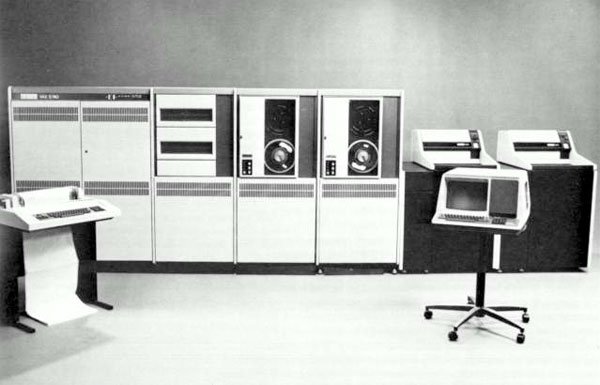The details of the story vary wildly from one source to another. In fact, there are two completely different versions of the tale: “The Great Dead Monkey Project” and “Mabel The Swimming Wonder Monkey.” So it may very well be nothing more than an urban legend. But both versions involve a terrible accident during an experiment at the University of Toronto.
They say Mabel was a monkey — or maybe a chimpanzee — who had been trained by scientists at the university during the late 1970s. They called her Mabel The Swimming Wonder Monkey because she knew how to swim underwater; she could breathe with the help of a customized scuba system. During their experiments, the researchers pumped various gasses into her breathing apparatus to determine the effects they had on her body.
The whole system was controlled by an early computer: the DEC VAX-11/780. It was a brand new, state of the art machine, which back in the 1970s meant that it took up most of a room, cost hundreds of thousands of dollars and came with up to 2 MB of memory. The unit the scientists were using had developed a fault, so one day a technician came in to fix it. While the repairs were being carried out, the part of the machine that regulated Mabel’s air was removed. Mabel was in the pool at the time. Her supply of oxygen was cut off completely. The Swimming Wonder Monkey drowned.
The other version of the story seems to have originated with someone who claims to have interviewed the woman who programmed the computer. According to her, the experiment had nothing to do with swimming underwater, but involved five monkeys who were hooked up to the computer so that it could read their brain waves. In this version of the story, the DEC VAX-11/780 crashed. And while it was being fixed, part of the machine that regulated the sensors was removed. Without it, the computer accidentally sent electrical signals directly into the monkeys’ brains. It killed three and stunned the other two.
The death of the monkeys — whether it Mabel or the others — is reported to be the origin of a popular term in computer geek slang: “scratch monkey“, an extra drive used to back-up data while troubleshooting. It’s a common proverb for safety-conscious hackers: “Before testing or reconfiguring, always mount a scratch monkey.” If the technician at the University of Toronto had thought to do the same, the life of a monkey — or three — would have been saved.
Photo: the DEC VAX-11/780
A version of this post originally appeared on the The Toronto Dreams Project Historical Ephemera Blog. You can find more sources, links and related stories there.



2 comments
Both stories seem highly suspect.
The VAX 11/780 came out in late 1977, and I don’t believe the first one arrived at UofT until some time later. Looking for references from the era, it appears they didn’t have one until the early 1980s. UWatterloo, often on the forefront of computer tech in this period, didn’t get their first VAX until 1981, for instance.
But more questionable is the use of a VAX for this sort of thing. By the mid-1970s there were a variety of machines aimed specifically at the market this story is talking about, this started with the PDP-8 and continued with the DG Nova series. These machines were much smaller than the VAX, MUCH cheaper, and able to do the same sorts of things.
Here’s a picture of the world’s first CAT scanner:
https://en.wikipedia.org/wiki/X-ray_computed_tomography#mediaviewer/File:Emi1010.jpg
On the far right you’ll see a white-ish coloured box on the rack with a bunch of buttons on it. Right above that is a much darker box. That box is a Nova. Now you have to imagine the amount of number crunching that goes into making a CAT scanner… if the Nova can do THAT, trust me, it can do anything being described in this article.
Using a VAX for this sort of role would be like using a nuclear bomb to take down a building… you could do it, but it’s overkill by orders of magnitude. The VAX was specifically designed to take over the business roles while smaller computers were used for other sorts of things, like experiments.
There is the *slight* possibility that the original author confused the PDP-11 with the VAX-11. The PDP-11 was a much smaller machine that was sometimes used in low-end roles like this (or the very first paid arcade game, for instance), but most of those users would have chosen the SuperNova. Both the PDP-11 and VAX-11 (named as a follow-on to the PDP-11) were generally used for business roles.
So, basically, I call BS.
The swimming monkey story seems really suspect. The Scratch Monkey Story on Eric Postpischil’s site seems to have specifics and provides a name for his source . Instead of reposting an old blog entry, maybe some research could of been done to verify this story? Perhaps contacting Eric for background, talking to his source, contacting the U of T or looking at newspaper archives?